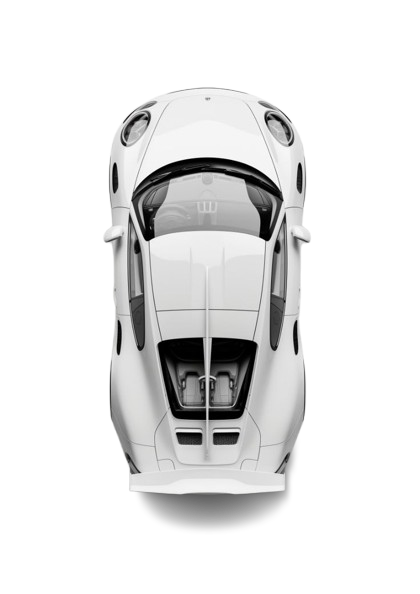

Market trend knowledge along with auction cycles is key when looking for the best time to buy used Japanese cars in 2025. The prices tend to fluctuate according to seasonal demand for Japan imports, depreciation rates and auction supply. Indeed, timing your purchase right can save you thousands. Moreover, spring and fall auctions often see price reductions while end-of-year auction deals Japan offer hidden bargains. Also, shipping costs vary with peak shipping discounts for Japan cars typically in low-demand periods. This guide discusses Japanese used car market trends 2025 so you can identify the best period for JDM imports while avoiding common mistakes. From decoding auction sheets to predicting Japanese used car prices in the UK, we’ll ensure you make a smart, cost-effective purchase. Let's start.
Understanding market forces affecting Japanese used car prices in 2025 will secure the best deals. From seasonal trends to depreciation cycles, several key factors determine when to buy Japanese used car 2025.
The Japanese used car market follows predictable seasonal patterns like:
Spring (March-May): Many Japanese owners trade in vehicles before the new fiscal year in April. This creates a surge in auction inventory. While selection improves, prices remain competitive due to high demand from domestic and international buyers.
Fall (September-November): Dealers aggressively clear stock before year-end, often resulting in fall vs. spring auction price drops. This is an excellent for buyers seeking Japan used car deals 2025 with less competition than spring.
Year-End (December-February): Auction houses slow down for holidays which leads to end-of-year auction deals Japan. Exporters often discount remaining inventory, making this one of the best periods for JDM imports.

Japanese vehicles depreciate fastest in their first 3-5 years. By 2025, post-2020 models will see major price drops, presenting excellent value. Popular models will be more affordable while still offering modern features.
Auction dynamics play a huge role in pricing:
Peak Demand (April, October): Prices rise slightly due to increased bidding activity from dealers restocking inventory.
Low Demand (January, August): Fewer buyers mean better opportunities for Japanese car auction best time bargains. This is true especially for niche JDM models.
Shipping rates fluctuate seasonally which affects the total cost:
Peak Shipping Discounts (February, September): Lower demand for freight means reduced costs. As a result, this saves you capital on import fees.
Typhoon Season (June-September): Delays and increased insurance costs make this a more risky period to ship.
Position your buying decision with these trends to capture highest savings on the vehicle as well as logistics.
Decoding Japanese Auction Sheets for Smart Buying in 2025
Mastering Japan's auction grading system is crucial for securing quality used cars at fair prices. The auction sheet provides a standardized assessment of each vehicle's condition through specific codes and ratings.
A (Excellent): Near-perfect condition with low mileage
B (Good): Minor cosmetic wear but mechanically sound
C (Fair): Visible repairs needed, higher mileage
R (Repaired): Accident history with professional restoration
Interior Condition Ratings:
U1-U6 scale indicates interior wear, with U1 being showroom quality and U3 representing average used condition.
Frame codes (XX/X/A) reveal accident history, while body ratings (S/4.5/5) use a 5-point scale - higher numbers mean better preservation.
Critical Verification Points:
Match engine codes to chassis numbers
Cross-check mileage records for discrepancies
Study remarks for terms like "clinker" (light scratches), "repainted" panels, or "ported" (rust repair)
Based on Japanese used car supply trends, the best period for JDM imports is:
January-February: Post-holiday discounts so low demand.
July-August: Summer slowdown, resulting into fewer buyers.
November-December: End-of-year auction deals
Expect:
Hybrids/EVs: Stable demand, slower depreciation.
Sports cars (Supra, Skyline): Rising due to collector interest.
Economy models (Toyota Aqua, Honda Fit): High supply, lower prices.
Buying a used car from Japan's auctions can save you thousands, but many first-time importers make costly errors. Here are the most common pitfalls and how to avoid them:
Auction sheets contain critical details about a car's history in the "remarks" section. Many buyers focus only on the grade (A/B/C/R) but miss important notes like:
"Clinker": minor dents/scratches
"Repainted": possible accident repair
"Ported": rust treatment history
Always translate and review every remark before bidding.
Auctions move fast, and it's very easy to overpay since:
FOMO (Fear of Missing Out): Set a max budget before bidding and walk away if prices exceed it.
Emotional attachment: Remember, another similar car will always appear at future auctions.
The auction price is just the beginning. Many forget to factor in:
Shipping costs (which vary by season – winter is often cheapest)
Import taxes and customs fees (varies by country)
Compliance modifications (needed for road legality in your country)
To get the best deals on Japanese used cars next year, timing is everything. The market follows seasonal demand Japan imports patterns, spring brings more selection, fall offers dealer clearances, and end-of-year auction deals Japan often have the biggest discounts. Remember that cars 3-5 years old follow the Japanese used car depreciation schedule, giving you the best value. The quietest Japan car auction season (January-February and July-August) typically have less competition and better Japanese used car prices 2025. Don't forget to factor in all costs beyond just detecting hidden issues in auction remarks, and setting a firm budget, will help avoid common mistakes. The right knowledge makes you ready to find a great Japanese import at the right price in 2025. For best period for JDM imports, consider working with an experienced importer who knows the Japanese used car supply trends inside out.
1. When is the cheapest time to buy a Japanese used car?
January and August due to lower auction competition.
2. Do Japanese used car prices drop at year-end?
Yes, end-of-year auction deals in Japan offer clearance discounts.
3. How does seasonality affect JDM imports?
Winter (low demand): better prices, summer: potential delays.
4. Are Japanese car auctions reliable?
Yes, if you understand auction sheet grades and verify history.
For Latest updates
